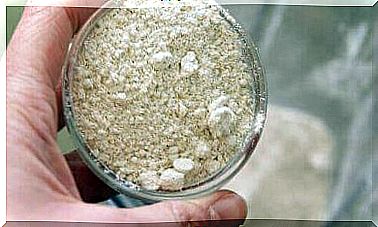Anaerobic Exercises: What Are The Benefits?

Before starting an exercise plan, you need to have some clarity in what you want to achieve or maintain. If you want to lose weight, aerobic exercise will work. But if you want to train for strength and power, you should use anaerobic exercises.
Regardless, research shows that aerobic and anaerobic exercises are complementary, as you get the energy you need for the former with the latter. Find out what these exercises – also known as static exercises – are about in this article!
What are anaerobic exercises?
In training, the muscles work. And as you know, all work requires energy. In this particular case, anaerobic exercises are exercises of high intensity and short duration that require a powerful and fast source of fuel from the body.
This fuel is present in immediate sources: adenosine triphosphate (also called energy currency), phosphocreatine (PC) and glucose.
Anaerobic exercises are often interspersed with aerobic sets. For example, while walking, you can run a sprint or fast run of 10 seconds to 1 minute, and then continue walking while replenishing your energy.
The time for explosive action that characterizes static, strength or anaerobic exercises varies from 1 minute to 120 seconds.
In this exercise, you activate two energetic mechanisms. During the first 10 seconds, the body uses creatinine phosphate, especially for short-term and very vigorous exercises. When extended over time, the body uses glucose as an energetic substrate, generating lactic acid.
If you extend this practice – from 20 to 120 seconds – lactic acidosis occurs, which creates the conditions for fatigue.
What are the benefits of anaerobic exercise?
Although there are many benefits to dynamic exercises, it increases muscle strength and power when you exercise static exercise regularly. It also improves endurance and basal metabolism.
On the other hand, a good walk provides immediate benefits, but the performance of anaerobic exercises requires time and endurance. In fact, you start noticing them after 3 months or more.

Disease prevention
Anaerobic exercises strengthen the immune system and help prevent diseases, such as type 2 diabetes. They also reduce cardiovascular conditions, arthritis and back pain.
Development and strengthening of muscle mass and bones
Weightlifting with dumbbells or apparatus is used to increase muscle mass. Lifting weights involves muscles and bones, so anaerobic exercise increases bone density, reducing the risk of osteoporosis.
It is important to pay attention to the weight you can lift, depending on the type of exercise to avoid injury.
Improve quality of life
Anaerobic exercises strengthen musculoskeletal structure, leading to greater balance in movement and greater confidence and independence in daily activities.
The strength that anaerobic training develops translates into vitality and optimism to meet daily challenges.
Anaerobic exercises: Increased metabolic rate
Experts recommend aerobic exercises for weight loss, but anaerobic exercises contribute very well to this purpose by increasing muscle mass.
By rebuilding muscle, anaerobic exercises reduce the amount of fat, resulting in a relative weight loss. In other words, aerobic exercise burns lipids, and anaerobic exercise increases lean fat.
This contributes to the increase in the speeds of your basal metabolism, that is, in the amount of energy your body needs for its vital functions.
The factor most closely associated with resting metabolism is lean mass. You achieve this with weightlifting, which reinforces the hypothesis that this exercise is useful for treating obesity.
Increases endurance and power
Anaerobic exercises are designed to build endurance. There comes a time of exercise when your legs or arms can no longer cope. This happens when blood lactate levels rise to levels that the body cannot get rid of immediately. This leads to muscle acidification, fatigue and loss of performance.
Increasing the threshold increasingly is part of anaerobic training in athletic endurance building. And among the routines are strength exercises that work with slowly jerking muscles. This takes work away from the slow fibers, which are the ones that accumulate more lactate.
Examples of anaerobic exercises
There are two types of strength or static exercises. Isometric, when there is a sustained muscle contraction against a fixed resistance (for example, a wall), and isotonic when muscle contraction can overcome resistance (lifting a weight):
- Weightlifting : This uses muscles to maximum capacity in a short time, without breathing. Exercise generates strength, power and endurance up to muscular hypertrophy.
- Sprinting : This consists of very intense short runs, such as the 100 meter sprint, and develops power and speed in the lower extremities and torso.
- Crunches : This is an exercise that can bring muscular endurance to fatigue, with increasingly longer sets of repetitions.
- Rods and parallel bars : Isometry includes bars and parallel bars that use the athlete’s own weight. In these, the muscles ask for an energy reserve that allows you to lift the body repeatedly.
- Squats : These also use body weight, just like push-ups, pull-ups and sit-ups. In squats, the weight of the torso falls directly on the thighs, while the arms are outstretched or in the neck.
- Push-ups : These exercises use gravity as resistance to overcome. Just like the bars, but up and down, the arms lift the weight of the upper body in this exercise.

Tips for performing anaerobic exercises
First of all, you should not start anaerobic routines without medical control, especially if you are suffering from an illness. At the same time, if you are a beginner and are overweight, you should not perform anaerobic exercises. The same applies if you are pregnant.
Before starting, the body should undergo a warm-up or cardio period, which gradually increases physical activity. This leads to the removal of lactic acid, which increases the heart rate and blood flow, and prevents the formation of stiffness.
Similarly, aerobic exercise should include stretching, which will prepare the body for the requirements of anaerobic exercise.
These are also strong exercises. We recommend that you rule out complicated movements in the beginning and allow yourself to gain experience to gradually add difficulties.
Anaerobic exercises require professional care and attention
Anaerobic exercises are very demanding, and if you do not practice the right precautions, it can lead to injuries. For example, it is important to know that there is an anaerobic threshold. This is the maximum exercise intensity you can expose your body to without experiencing extreme fatigue.
Exercise above this threshold will depend on many factors: the type of exercise, muscle composition, diet and the environment. In general , the body must adapt to different levels, which you can manage without complications below this threshold.
Going beyond this threshold requires professional training and monitoring, sometimes with a view to practicing high-performance sports.









